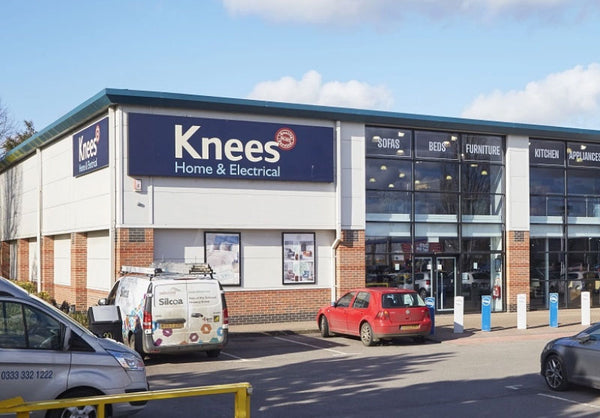Our guide to buying the best hob for you
Hob buyers guide
There’s lots to consider when buying a hob, from the fuel type and the size to specialist cooking features and functions. With so many options available, finding the perfect hob can seem daunting. Our guide provides an overview of some of the key points to consider when choosing your next hob.
What are the different types of hob?
We have five types of hobs to choose from – dual fuel, electric, ceramic, induction and gas. But what’s the difference?
Electric hobs
Electric and gas are the more traditional styles, but the two are quite different. Electric hobs can take a couple of minutes to heat up, whereas gas gives instant heat with a flame.
The areas on which you place your pans on an electric hob are called zones and depending on the size you require, can be found in one to six zones.
Electric hobs take a while to cool down after you turn them off. That’s why many models include a heat indicator to show which areas are still hot. You may also find some with child safety features for that extra peace of mind.
Gas hobs
Gas hobs come with between one and six burners and offer an easy way to control heat or provide direct heat. You may find some models offer various types of burners within the same hob so you can use different pans at the same time.
There’s also a safety aspect to consider with gas burners due to the open flame. A Flame Supervision Device (FSD) or Flame Failure Device (FFD) is a part of the gas burner system that ensures the fuel supply to a gas hob is cut off automatically if the flame goes out or becomes unstable.
Other features include pan supports, which prevent pans from slipping during use. They are available in different materials such as cast iron and enamelled steel.
The burners themselves are more difficult to clean than electric hobs, but the pan supports can be easily removed for cleaning.
Dual fuel hobs
Dual fuel hobs offer the best of both worlds and combine electric induction and gas in the same hob.
One side of the hob has gas rings, which are ideal for high-temperature cooking. The other side, however, features an induction top that allows for easier and more controlled cooking at lower temperatures.
An increasingly popular choice, dual fuel hobs are ideal for any budding chef.
Induction hobs
Induction hobs might look similar to ceramic hobs but they work very differently. The heat is not generated on the cooking ring itself. Instead, the hob creates a magnetic field that causes the molecules inside the pan to vibrate, thus generating heat. As a result, the hob top does not have the same amount of latent heat in it, making induction far safer to use.
Induction hobs cool down much faster than ceramic and electric solid plate hobs. And although the surface will retain a small amount of residual heat after cooking, it will still be safe to touch. It also helps if the pot boils over because the contents do not then stick to the hob surface, allowing for easy cleaning.
What’s more, induction hobs are very energy-efficient, which can make all the difference to your household bills.
It’s important to remember that not all pans are suitable for use on induction hobs. Opt for steel or cast iron pans and stay clear of copper or aluminium cookware. The higher the quality of the pan and its steel content, the better the induction hob will work.
Induction hobs come in various different forms and allow for versatile cooking at both higher and lower temperatures. You can even have the whole surface as one large induction plate, meaning that you can cook anywhere on the surface, but this can come at a higher price.
Ceramic hobs
Ceramic hobs look sleek and stylish and come with a choice of cooking zones. Plus the flat surface is easy to clean, which saves so much time in the after-dinner clear-up.
Generally, you can choose from traditional-looking dials, or a more modern touch display to control the heat.
Heat is generated underneath the ceramic glass, which then transfers to your pot. Ceramic hobs can be slightly more expensive than gas or electric hobs and the heat may take a little longer to disperse after cooking. However, features such as heat indicators can help from a safety aspect.
Venting hobs
A venting hob is an induction hob with a built-in extractor fan in the centre.
This type of hob is great if you don’t have space for an extractor hood or if you’re thinking about installing your hob on a kitchen island. Bear in mind that you’ll need a little more space underneath, as the venting equipment will need to go below the counter instead of above it.
Combining advanced technology with stylish design, a venting hob is the ideal choice for any modern home.
Size and fitting
Size is another key consideration, particularly if you’re replacing an old hob in the same space as before.
As well as the length and width, you’ll need to think about the depth and if there are any obstructions underneath, for example, a drawer that could get in the way if the depth of the hob is different to your previous one.
And, of course, make sure you have the correct gas or power supply in place before purchasing, and always ensure you arrange for a qualified engineer to instal your new hob.
Common hob features
Easy clean
Ceramic and induction hobs are the easiest to clean thanks to their shiny, smooth surfaces. The glass surface cools down quickly which makes it easy to wipe away any spillages.
Control panel
Some people prefer touch-sensitive control buttons while others favour manual buttons. Ultimately it’s your choice but it’s good to bear this in mind when purchasing. You can get various controls nowadays including standard knobs, touch control or twist magnetic illumination. This can make cleaning use much easier as well.
Safety and security alerts
A lot of hobs now come with features to keep you and your family safe. Most modern gas hobs will have a flame failure safety device, which will instantly cut off the gas supply if the flame goes out. Most induction hobs cool down very quickly and are safe to touch soon after use.
Pan detection
Newer induction hobs can detect when a pan is on the hob using electromagnets. This directs all the heat towards what’s inside your pan instead of the hob’s surface for fast, powerful and safe cooking.
Power supply
Please bear in mind that the power supply can differ across the various different sizes of hob. This will usually range from 13amp to 50amp. A lower amperage could mean that if all four rings are being used, they will only come on at lower power settings. It’s best to contact an electrician if you are unsure of what connection is possible in your home before buying your hob.
Do you need a cooker hood to match your new hob?
We sell a range of cooker hoods including canopy hoods, chimney hoods, downdraft hoods, integrated hoods and island hoods.
Delivery of your new hob
We offer a free local delivery service to certain postcodes within a set radius of our stores. National delivery to postcodes outside of these areas is charged at £24.98 (appliances under 60cm wide).
For more information please visit or help with your order and our delivery services page.
Shop for hobs at Knees Home & Electrical
Whether you’re looking for a gas, ceramic or induction hob, we stock a wide variety of hobs from top brands including Neff, Siemens, Smeg and Fisher & Paykel.Knees Home and Electrical have a store in Wiltshire, Trowbridge. We have a range of hobs on display in-store so you can try them before you buy. But you don’t have to live locally to buy your hob from us. We deliver across mainland UK using our delivery partner and you can see and buy our entire range online.



